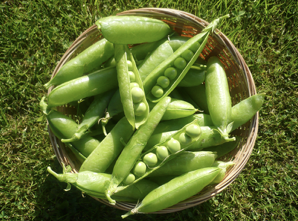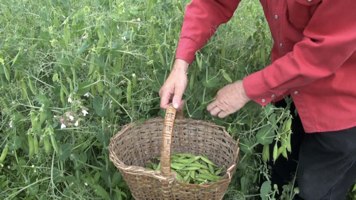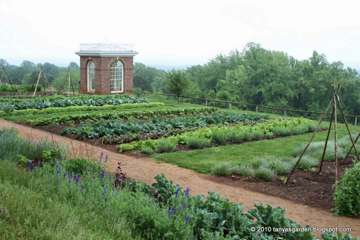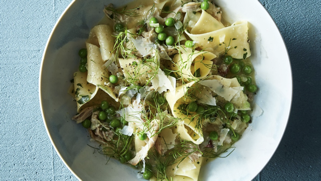It's Springtime...Give Peas a Chance!
Cute title, huh? Wish I’d thought of it, but I actually found this title and its accompanying article (by Sherry Castle, food researcher and writer) on the NPR.org website. The information is so good that I thought it should be passed on.

So peas. Isn’t it too bad that this delicious veggie has nearly been done in by the tin can? Sherry put it this way: “Their unfortunate incarceration renders them drab, mush and bleak. They taste of the tinny can, if anything at all. Brilliant, beautiful, garden peas deserve better.
But when straight from the pod, they’re emerald green and tender, have a gentle crunch and taste sweet, green and grassy. But their sugars quickly regress to starch from the moment they are picked. No spring vegetable is more delightful when fresh and more disappointing when not.”

Perhaps the best recipe for garden peas is really no recipe at all. Just pick and eat. Fresh baby garden peas are wonderful tossed into salad, stir fry, soup, and so on. But to just eat them out of hand—now there’s bliss. In fact, Winston Churchill knew this as well, and was quoted as saying, “We lived simply…hot baths, cold champagne, and new peas…”
This precious vegetable (precious because of its very short growing season) has several names: green peas, sweet peas, spring peas, English peas, petit pois and garden peas. Humans have cultivated peas for at least 12,000 years, making them one of the earliest crops, but it was centuries before gardeners developed peas that could be eaten fresh instead of only dried.
Garden peas were once so expensive and dear that only royalty and the very wealthy could enjoy them. In the late 17th century, eating freshly shelled peas was a daring food craze in the court of King Louis XIV, where the elite popped them like pills and nibbled them as candy.

Thomas Jefferson was similarly smitten by green garden peas, having discovered them during his time in France. He's reported to have cataloged at least 50 varieties and grown at least 30 at Monticello.
The bottom line? We must eat fresh peas in their seasonal prime, which is fleeting and rare. Even today, only 5% of all peas are sold and eaten fresh. The consolation prize is frozen peas. Few vegetables freeze as well. If frozen quickly after harvest, before they have a chance to decline, garden peas are able to retain all their color and nutritional value, most of their flavor and much of their texture. When freshly picked and shelled peas aren't available, frozen baby peas are almost always superior to so-called fresh peas that are several days old.

Anyway, it's springtime. Give peas a chance. And to help you do just that, here’s a favorite recipe I found a few years ago in one of my Bon Apetit magazines that uses fresh peas and pappardelle. (Pappardelle is a broad, flat noodle-type pasta that’s usually served with a meat sauce.)

Pappardelle with Chicken Ragu, Fennel and Peas

Serving size: 1
Calories per serving: 3,677.667
2 tablespoons olive oil
6 slices bacon thinly sliced
1 1/2 pounds skin-on, bone-in chicken thighs (about 6 total)
kosher salt to taste
2 medium onions finely chopped
1 bulb fennel finely chopped, plus ¼ cup coarsely chopped fronds
6 sprigs thyme
1/2 cup white wine
1/2 cup milk
1 cup shelled, fresh peas (from about 1 pound pods) or frozen peas, thawed
freshly ground black pepper to taste
12 ounces fresh or dried fettuccini pasta
2 tablespoons butter cut into pieces
1/2 cup finely grated Parmesan cheese plus shaved for serving
2 tablespoons finely chopped parsley
Directions:
Increase heat to medium-high. Season chicken all over with salt, then set in pan, skin side down. Cook, turning halfway through, until golden brown on both sides, about 6 minutes total. Transfer to a plate.
Pour off all but 2 Tbsp. fat from pan. Add onions and chopped fennel and cook, stirring occasionally, until soft and golden, 6–8 minutes. Add thyme and cook until fragrant, about 30 seconds. Pour in wine and simmer, stirring and scraping up brown bits, until reduced by half, about 5 minutes. Return bacon and chicken to pan (chicken should fit snugly in a single layer); pour in water to barely cover chicken. Bring to a simmer. Reduce heat to medium-low and set lid askew. Cook until chicken is tender, 45–60 minutes.
Transfer chicken to a clean plate; let cool. Finely shred chicken meat; discard bones and skin.
Add milk to pan and set over medium-high. Cook, stirring occasionally to prevent sticking, until sauce is nearly reduced by half and slightly thickened, 8–12 minutes.
Mix peas and chicken into sauce and cook until peas are just tender, about 4 minutes for fresh peas and 2 minutes for frozen. Season ragù with salt and plenty of pepper. Keep warm while you cook the pasta.
Cook pasta in a large pot of salted boiling water, stirring occasionally, until very al dente. Drain, reserving 1 cup pasta cooking liquid.
Add pasta, butter, ½ cup grated Parmesan, and ½ cup pasta water to ragù and mix to coat pasta with sauce. Increase heat to medium (sauce should be bubbling just a little) and continue cooking, stirring and adding more cooking liquid as needed if sauce is too thick, until butter and cheese are melted and incorporated into ragù and pasta is well coated in sauce. Add parsley and toss to evenly distribute through pasta.
Divide pasta among bowls. Top with fennel fronds and shaved Parmesan.
Do Ahead: Ragù can be made 2 days ahead. Let cool; cover and chill. Reheat gently before using.
- www.qualityfoodawards.com
- www.videoblocks.com
- www.tanyasgarden.blogspot.com
- www.behance.net
- www.bonapetit.com
 Alice Osborne
Alice Osborne
Weekly Newsletter Contributor since 2006
Email the author! alice@dvo.com
